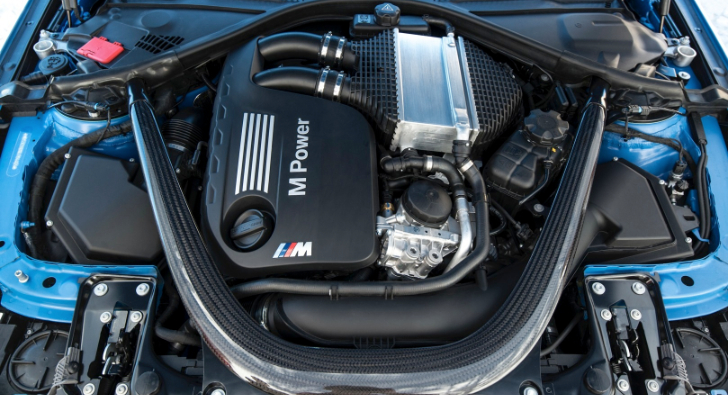It’s time to face the music: the naturally aspirated engines are forever gone from BMW’s line-up. Unfortunately, it’s also the case with its Motorsport division, or M for short.
M engines will, from now on, rely on turbocharging to get up to par with the competition. While some ‘purist’ are now tormented by that fact, others have come to embrace it as the expected outcome of the current eco regulations.
The advantages of turbocharging are pretty obvious (more power, torque and fuel efficiency) but so are its disadvantages that include, amongst other, a less than razor-sharp pedal response, less revs and a different sound.
All of these issues have been noticed on the new S55 engine powering the new M3 and M4. Using a 3-liter, 6-cylinder architecture, the new powerplant makes 431 HP and 550 Nm (406 lb-ft) of torque thanks to two identical Mitsubishi single-scroll turbochargers.
With all the might of the M division behind them, the engineers still didn’t manage to make the throttle response just as sharp as on a naturally aspirated engine, even though they did come really close.
On the revving scale, thing are looking better, the unit going up to 7,600 RPM, just 600 RPM shy of what the old V8 was capable of. While for some people it might not be very much, considering there are two turbos installed on there, it’s quite an impressive number.
Speaking at the recent BMW M3 and M4 launch in Portugal, Friedrich Nitschke, the CEO of the M division said that people should actually drive the car and then complain if they’ll find reasons to.
“You can imagine that a lot of our fans questioned [my decision] when they heard that we would bring a turbo engine [to the M3/4], I said please wait, test the car, drive the engine and then lets discuss,” he said.
We tend to agree. It’s one thing to stay home and judge a car based on all sorts of Youtube videos and everyone’s thoughts on the matter and a completely different thing to actually drive it. Even so, the reviews so far have been split, some saying that there’s actually virtually no turbo lag and that the car sounds great and some saying that there’s still room for improvement. Until we get to drive one, we can’t really choose sides.
The advantages of turbocharging are pretty obvious (more power, torque and fuel efficiency) but so are its disadvantages that include, amongst other, a less than razor-sharp pedal response, less revs and a different sound.
All of these issues have been noticed on the new S55 engine powering the new M3 and M4. Using a 3-liter, 6-cylinder architecture, the new powerplant makes 431 HP and 550 Nm (406 lb-ft) of torque thanks to two identical Mitsubishi single-scroll turbochargers.
With all the might of the M division behind them, the engineers still didn’t manage to make the throttle response just as sharp as on a naturally aspirated engine, even though they did come really close.
On the revving scale, thing are looking better, the unit going up to 7,600 RPM, just 600 RPM shy of what the old V8 was capable of. While for some people it might not be very much, considering there are two turbos installed on there, it’s quite an impressive number.
Speaking at the recent BMW M3 and M4 launch in Portugal, Friedrich Nitschke, the CEO of the M division said that people should actually drive the car and then complain if they’ll find reasons to.
“You can imagine that a lot of our fans questioned [my decision] when they heard that we would bring a turbo engine [to the M3/4], I said please wait, test the car, drive the engine and then lets discuss,” he said.
We tend to agree. It’s one thing to stay home and judge a car based on all sorts of Youtube videos and everyone’s thoughts on the matter and a completely different thing to actually drive it. Even so, the reviews so far have been split, some saying that there’s actually virtually no turbo lag and that the car sounds great and some saying that there’s still room for improvement. Until we get to drive one, we can’t really choose sides.
